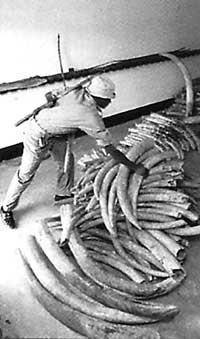Boli, elephants and tagua
2003/06/22 Galarraga Aiestaran, Ana - Elhuyar Zientzia
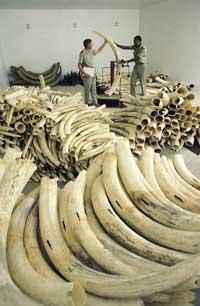
In November last year, however, Cites changed its mind and accepted requests from the South African Republic, Botswana and Namibia. Accordingly, these countries are authorized to sell the pen they have in their warehouses. In fact, among the three warehouses have 60 tons of boli, the majority seized from poachers.
However, the international animal welfare organization, Ifaw, is concerned that it believes that trade authorization will encourage poaching. And it is not possible to distinguish between the smuggling pen and the commercialized legally.
Cites has promised that sales will be made under strict rules. In addition, trade will not be allowed if it is not shown that poaching will not grow with it, and has launched a program called Mike (Monitoring Illegal Killing of Elefants) to learn about the influence of illegal elephant hunting in Asia and Africa. Cites also proposes that the money from the sale of the pen is intended to protect elephants.
These measures are insufficient to reassure Ifawa's concerns. According to a report issued by this organization to Cites, Mike is still in its early stages and does not believe that until 2008 there is sufficient data to make decisions. To begin with, they do not know how many elephants are left. According to Ifawa, in Africa there are between 300 and 450 thousand and in Asia there are only between 35 and 50 thousand wild elephants. Without an exhaustive census of elephants, it is impossible to know the influence of trade on the number of elephants.
On the other hand, they consider that the money to be spent to control the poachers can be equivalent to that which has been taken out of the sale of the pen, so they do not seem to have money to use it in programs for the benefit of the elephants. The proposed solution is that international institutions or governments buy the booked pen and remove it from the market, so that those states that have the stacked pen have benefits, and elephants are not endangered.
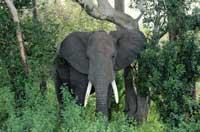
They have not yet made the final decision. However, the problem is not easy to solve, since they have been discussing the topic for years. Meanwhile, the elephant population continues to decline.
Precious material
The largest bowling market is in Japan, where jewelry and other materials made with this material are highly appreciated. For example, wealthy grandparents give their grandchildren ivory stamps when they graduate. These stamps were formerly used to print names in official documents, and are now a symbol of high social level.
Since the Ivory stamps have a great demand, it is little wonder that their ads appear in the media. In addition, most ads are published in magazines aimed at young people and women, so it seems that traders want to ensure that the custom continues for years.
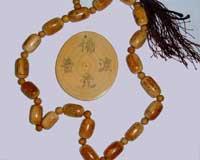
In addition, many artisans work the pen in Japan and the government does not want to lose that industry. Therefore, it has an agreement with Zimbabwe, Botswana and Namibia to buy pens and, in return, Japan also provides money to these countries to preserve the elephant population.
Tagua, vegetable pen
It is clear that the market so closed and difficult increases its estimate regarding the ball. And there are materials like the pen, much cheaper and affordable, but they have not managed to replace the pen.
However, tagu or vegetable pen has a great success in some places. Tagua is the hazel of the fruit of palm trees, Phytelephas seemannii and Phytelephas macrocarpa. The palms grow in Panama, Colombia, Ecuador and Peru, have a length of five meters and a small and creeping trunk, giving lots of fruits that reach 12 kilos of weight. Each fruit contains between 6 and 9 hazelnuts collected.
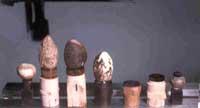
The tagu is of style boli, both in color, appearance and hardness. It serves to do many things that are made with bowling: jewelry, decorations, piano keys... Formerly it used a lot: In 1880, four thousand tons of water left the Tumaco dock in Colombia. With this, buttons, umbrella handles and sticks, pipes and many other useful were manufactured. But when the plastic was invented the demand decreased a lot.
Now, the tagua market is being strengthened and the work done with this material is increasingly appreciated. By the way, and even to some extent, if you can substitute the ball, gold with diamond.
Published in 7K.

Gai honi buruzko eduki gehiago
Elhuyarrek garatutako teknologia




